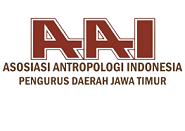Implementation of Kashmir as an independent state in South Asia
Downloads
The study investigates the conflict between India and Pakistan over Kashmir as a manifestation of a disagreement between the two countries and emphasizes the factors that are required for the state to act independently, including international law perspective, economic history, natural resource production, geography, and culture. According to the findings of the study, India and Pakistan have rejected the first two options of formal partition and autonomy, but the third option, an independent state, will remain the most viable option for the foreseeable future because neither India nor Pakistan can rule the entire region of Kashmir. As a result, the emergence of an independent state in Asia is considered a legitimate, negotiated solution to the Kashmir dispute. It is asserted here that as long as both India and Pakistan maintain their historically defensive positions, there is little hope for long-term peace in Kashmir. The study further contends that Kashmir's independence is the only way to ensure a long-term settlement to the Kashmir dispute as well as regional peace in Southeast Asia.
Adekoye RA (2018) Indo-Pakistani conflict and development of South Asia: is an independent Kashmir State a possible consideration? Doctoral dissertation, University of Zululand, South Africa.
Ahmad IM & Hussain NA (2011) Impact of turmoil on tourism of Kashmir. Journal of economics and sustainable development 2 (7):1-7.
Ahmad Z (1969) Directory of mineral deposits of Pakistan. Rec. Geol. Surv. Pakistan 15:1-220.
Ahmed T (2017) Citizen Public Opinion Survey - AJK Report 1.0. DOI 10.13140/RG.2.2.28224.84484.
Ali ST (1951) Alluvial gold in Chitral. Geological Survey of Pakistan.
Assistant Political Agent S (1956) A letter to Geological Survey of Pakistan. Geological Survey of Pakistan File No. 351 (1):1-24.
Baba NA (2014) Resolving Kashmir: Imperatives and solutions. Race & Class 56 (2):66-80. https://doi.org/10.1177/0306396814542918.
Bhatti NA & Alam A (1989) Heavy mineral analysis of stream and samples from Gilgit agency. Geological Survey of Pakistan, Information Release, 336.
Bouzas AM (2012) Mixed legacies in contested borderlands: Skardu and the Kashmir dispute. Geopolitics 17 (4):867-886. https://doi.org/10.1080/14650045.2012.660577.
Bradnock R (2010) Kashmir: Counting in Kashmir. The World Today 66 (6):27-28.
Burki SJ (2007) Kashmir: A problem in search of a solution. United States Institute of Peace.
Clavarino JG, Dawney RL, & Sweatman TR (1995) Gold Exploration in Northern Areas, Status and Prospects. In: Proceedings of International Round Table Conference (1994) and Foreign Investment in Exploration and Mining in Pakistan. Pakistan: Govt of Pakistan and UN, 93-120.
Deci EL & Ryan RM (Eds.) (2004) Handbook of Self-Determination Research. University Rochester Press.
Hilali AZ (1999) Kashmir: A dangerous flashpoint in South Asia. Bulletin of Concerned Asian Scholars 31 (2):65-74. https://doi.org/10.1080/14672715.1999.10415746.
Hilali AZ (2001) Kashmir: Emerging Nuclear Threat in South Asia. Perspectives (16):34-56.
Indurthy R & Haque M (2010) The Kashmir conflict: Why it defies solution. International Journal on World Peace 27 (1):9-44. https://www.jstor.org/stable/20752914.
Indurthy R (2005) The turns and shifts in the U. S. Role in the Kashmir conflict since 1947: Today's propitious times for a facilitator to resolve it. Asian Affairs: An American Review 32 (1):31-56. https://doi.org/10.3200/aafs.32.1.31-56.
Jha PS (2014) Grasping the Nettle. South Asian Journal 4 (2):16-33.
Kashmir Study Official (n.d.) [Accessed 2022]. kashmirstudy.com.
Kazmi AH & Abbas SG (2001) Metallogeny and mineral deposits of Pakistan. Islamabad, Pakistan: Orient Petroleum.
Kazmi AH & O'Donoghue M (1990) Gemstones of Pakistan. Pakistan: Gemstone Corporation of Pakistan.
Kurr N (2015) Solutions to the conflict in Kashmir. International ResearchScape Journal 3 (1):5.
Malkani MS (2012) Natural resources of Khyber Pakhtunkhwa, Gilgit-Baltistan and Azad Kashmir, Pakistan. J. Himal. Earth Sci 45 (2).
Malkani MS (2020a) Mineral resources of Gilgit Baltistan and Azad Kashmir, Pakistan: An update. Open Journal of Geology 10 (06):661-702. https://doi.org/10.4236/ojg.2020.106030.
Malkani MS (2020b) Cement resources, Agrominerals, construction, marble, dimension and decor stone resources, gemstone and jewelry resources of Pakistan. Open Journal of Geology 10 (08):900-942. https://doi.org/10.4236/ojg.2020.108041.
Malkani MS, Mahmood Z, Somro N, & Arif SJ (2017) Gemstone and Jewelry Resources of Pakistan. Geological Survey of Pakistan, Information Release 1004:1-28.
Mayring P (2021) Qualitative Content Analysis: A Step-By-Step Guide. SAGE.
McGranahan C (2003) Kashmir and Tibet: Comparing conflicts, states, and solutions. India Review 2 (3):145-180. https://doi.org/10.1080/14736480412331307112.
Mukherjee A (2009) A brand new day or back to the future? The dynamics of India-Pakistan relations. India Review 8 (4):404-445. https://doi.org/10.1080/14736480903324990.
Singh J (2018) Jammu and Kashmir: A controversial state. [Accessed 2022]. https://medium.com/@janhvisingh17/jammu-and-kashmir-a-controversial-state-1bc84be399e7.
Staniland P (2013) Kashmir since 2003. Asian Survey 53 (5):931-957. https://doi.org/10.1525/as.2013.53.5.931.
Taras R & Ganguly R (2015) Understanding Ethnic Conflict. https://doi.org/10.4324/9781315662343.
Tremblay RC (2009) Kashmir's secessionist movement resurfaces. Asian Survey 49 (6):924-950. http://dx.doi.org/10.1525/as.2009.49.6.924.
Yusuf M & Najam A (2015) Kashmir: Ripe for resolution? Third World Quarterly 30 (8):1503-1528. https://doi.org/10.1080/01436590903321869.
Zardari AA (2011) Pakistan backs Kashmiris' just struggle for right to self-determination. [Accessed 2022]. http://www.presidentofpakistan.gov.pk/index.php?lang=en&opc=3&sel=2&pId=378&pressReleaseYear=2011&pressReleaseMonth=04.

This work is licensed under a Creative Commons Attribution-NonCommercial-ShareAlike 4.0 International License.
1. The authors agree to transfer the transfer copyright of the article to the Indonesian Journal of Social Sciences effective if and when the paper is accepted for publication. The authors can download the Copyright Transfer Agreement here.
2. The legal formal aspect of journal publication accessibility refers to Creative Commons Attribution-NonCommercial-ShareAlike 4.0 International License (CC BY-NC-SA).
3. Every publication (printed/electronic) is open access for educational purposes, research, and library. Other than the aims mentioned above, the editorial board is not responsible for copyright violation.

IJSS by Unair is licensed under a Creative Commons Attribution-NonCommercial-ShareAlike 4.0 International License.




















